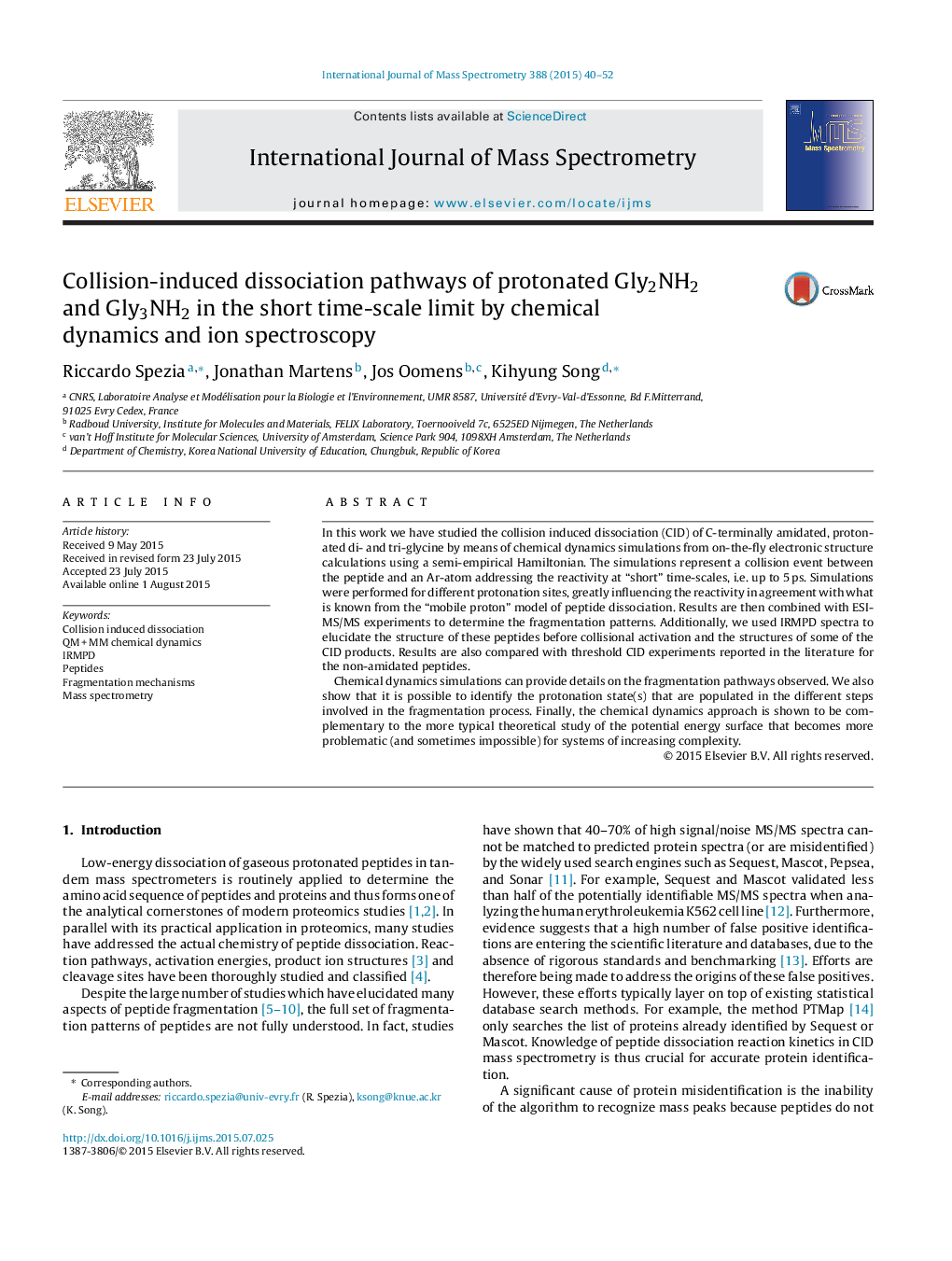| کد مقاله | کد نشریه | سال انتشار | مقاله انگلیسی | نسخه تمام متن |
|---|---|---|---|---|
| 1192370 | 1492242 | 2015 | 13 صفحه PDF | دانلود رایگان |

• CID fragmentation patterns of protonated Gly2NH2 and Gly3NH2 are explained by chemical dynamics simulations.
• Ion spectroscopy is used to understand structures of precursor and unknown products ions.
• Different protonation sites were investigated by short-time chemical dynamics pointing out the ones that are more likely involved in direct formation of products after a single collision event.
• Experimental MS/MS spectra are understood by short-time collision dynamics if the relevant protonation site is used in calculations.
In this work we have studied the collision induced dissociation (CID) of C-terminally amidated, protonated di- and tri-glycine by means of chemical dynamics simulations from on-the-fly electronic structure calculations using a semi-empirical Hamiltonian. The simulations represent a collision event between the peptide and an Ar-atom addressing the reactivity at “short” time-scales, i.e. up to 5 ps. Simulations were performed for different protonation sites, greatly influencing the reactivity in agreement with what is known from the “mobile proton” model of peptide dissociation. Results are then combined with ESI-MS/MS experiments to determine the fragmentation patterns. Additionally, we used IRMPD spectra to elucidate the structure of these peptides before collisional activation and the structures of some of the CID products. Results are also compared with threshold CID experiments reported in the literature for the non-amidated peptides.Chemical dynamics simulations can provide details on the fragmentation pathways observed. We also show that it is possible to identify the protonation state(s) that are populated in the different steps involved in the fragmentation process. Finally, the chemical dynamics approach is shown to be complementary to the more typical theoretical study of the potential energy surface that becomes more problematic (and sometimes impossible) for systems of increasing complexity.
Figure optionsDownload high-quality image (103 K)Download as PowerPoint slide
Journal: International Journal of Mass Spectrometry - Volume 388, 15 September 2015, Pages 40–52